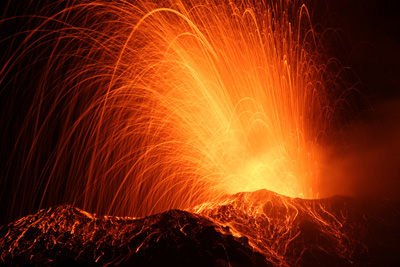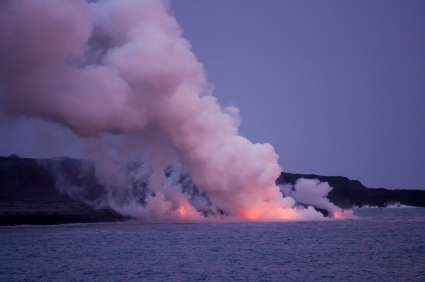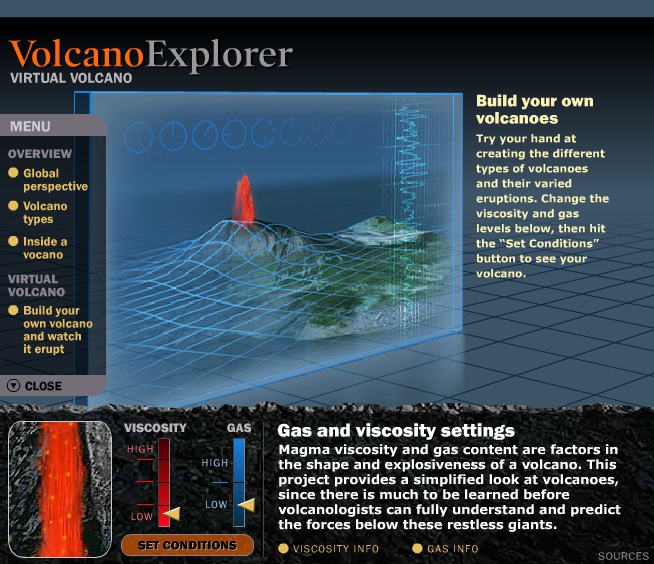Volcanoes
Overview

Eruption of Mount Stromboli, Italy.
Volcanoes are the most dramatic and rapid agents of geologic change. An erupting volcano can eject vast amounts of ash and gases into the atmosphere and cover the ground with tons of lava flows and ash. Eruptions create new mountains and tear down old ones as we watch. Large eruptions are dangerous, sometimes killing tens of thousands of people at one time. But the most extreme impact of eruptions is their effect on Earth’s climate.
Our planet’s climate results from a complex and always changing mixture of processes and events. The basic source of energy is radiation from the sun. The incoming radiation interacts with Earth’s atmosphere and surface so that changes to either can affect the climate. For example, a dark lava flow absorbs more of the solar energy than a desert soil, so a large enough lava flow could warm a local region. But a much larger influence on climate comes from volcanic gases erupted into the atmosphere that spread out and encircle the planet.
The most abundant gas typically erupted is water vapor, which has been measured to be as high as 97 percent of gases erupted from some volcanoes. The water has very little impact on climate because it usually rains out of the atmosphere fairly quickly. In fact, it is very common to find volcanic ash deposited that preserves rainfall splash marks.

Volcanic eruption, Hawaii.
The greenhouse gas carbon dioxide (CO2) is the second most common gas (varying from 1 percent to 50 percent in different types of eruptions). Carbon dioxide is heavier than air and commonly ponds in low-lying areas; it can poison and kill animals that breathe it. The CO2 does not significantly influence climate because volcanic CO2 is only about 1 percent of what is released by burning of fossil fuels.
The gas that does have a noticeable climate impact is sulfur dioxide (SO2). Unlike greenhouse gases, SO2 cools the atmosphere. Magma contains a small amount of SO2, typically less than 10 percent by volume. Large eruptions thrust the SO2 into the upper atmosphere (the stratosphere), where it is transported around the planet. Contact with abundant water changes the SO2 gas into sulfuric acid (H2SO4) droplets called aerosols. Even though they are microscopic, there are billions of such aerosols following a big eruption, so they actually affect the climate. Each aerosol absorbs some of the radiation from the sun, heating itself and the surrounding stratosphere. But each ray of sunlight that hits an aerosol does not strike Earth, robbing the surface of that small amount of heat. During the 1900s there were three large eruptions that caused the entire planet to cool down by as much as 1 degree Celsius. Volcanic coolings persist for only 2-3 years because the aerosols ultimately fall out of the stratosphere and enter the lower atmosphere, where rain and wind quickly disperse them.
Although scientists understand the basic mechanism of cooling caused by eruptions, there are many details still to be investigated. Here are some questions for you to consider:
- Not all volcanic eruptions seem to affect climate. What are the characteristics, other than size, of those that do?
- How can geologists predict which volcanoes are likely to impact the climate when they erupt?
- What would be the climate effect if a series of large eruptions occurred over 10 years?
Volcanic Gases and Climate Change Overview (U.S. Geological Survey)
Volcanic Gases and Their Effects (U.S. Geological Survey)




